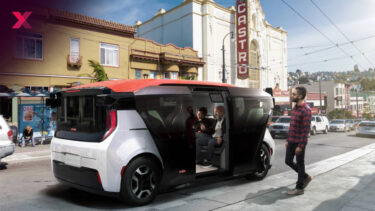Autonomous driving: Dubai catches up & fewer startups test in California

Fewer and fewer autonomous driving startups are testing in the U.S. state of California. In Dubai and Abu Dhabi, however, the industry could soon flourish. The robo-car week in review.
In the United Arab Emirates, autonomous driving could soon be shaping traffic. Local road authorities are just getting ready to set the legal framework for full-scale test drives. Meanwhile, the number of companies testing in California, a previously popular location, is falling. Just under half of the more than fifty companies that once operated there are still active.
Content
Autonomous driving: Cruise moves to Dubai
The USA and China in particular are considered pioneering locations for autonomous driving. Just recently, the first robo-taxi service without a safety driver launched in San Francisco. The operator is the General Motors subsidiary Cruise, which is also co-financed by Microsoft.
Within the next six years, Cruise aims to become more profitable than Uber. To do so, the company needs larger fleets and, most importantly, more areas of operation. A new location will soon be established in the United Arab Emirates. The road traffic authority in Dubai recently authorized preparations, such as the creation of HD maps, so that the autonomously driving Cruise vehicles can begin their test drives toward the end of the year.
Starting in 2023, Dubai aims to be the first city outside the U.S. to operate driverless cruise cabs. Initially, only a small fleet is planned. But by 2030, up to 4,000 driverless cruise cabs are expected to provide passenger rides in Dubai.
WeRide successfully tests in Abu Dhabi
Cruise is in a race with WeRide in the United Arab Emirates. The Chinese startup is heavily backed by Nissan and began driverless autonomous test rides in the Chinese metropolis of Guangzhou as early as 2020. Last summer, WeRide bought the robo-truck start-up MoonX.AI, bringing over fifty new autonomous driving experts onto the team.
In the United Arab Emirates, Dubai is working with artificial intelligence and data analytics specialists Bayanat. Together, the companies aim to build the TXAI autonomous cab service and last week announced the first successful tests in Yas Island, Abu Dhabi.
The robo-taxis covered more than 16,000 kilometers in one month, carrying 2,733 passengers. Test drives in other areas of Abu Dhabi are scheduled to follow in mid-2022.
Autonomous driving in California: Fewer vehicles, but more kilometers driven
While the number of companies testing autonomous driving vehicles is increasing in the United Arab Emirates, there are fewer and fewer in California. That was reported by the Department of Motor Vehicles (DMV) there, which is currently involved in a legal dispute with Waymo. While in 2020, 58 companies still held a license for autonomous test drives in California, the number dropped to fifty last year. Of those, however, only 22 were actually active.
The number of test miles driven, nonetheless, increased to nearly double that number. Between Dec. 1, 2020, and Nov. 30, 2021, autonomous test vehicles drove 4,091,500 miles (about 6,584,631 km) on California's public roads, according to the report. That equates to more than two million miles more than the previous year, according to DMV. Another 25,000 miles (about 40,234 km) were covered by autonomous driving vehicles without a safety driver in the cockpit.
Cruise and Waymo dominate California
By far, Waymo's robo-taxis were on the road the most (2.3 million test miles), followed by Cruise with 882,471 miles driven. Next came Pony.AI, which recently lost its driverless test license, with 305,617 miles (about 491,843 km) and Amazon's Zoox with 155,125 miles (about 249,649 km).
In addition to the miles driven per licensed operator, the DMV also publishes the number of technically necessary shutdowns ("disengagements") during those trips in the annual report. Waymo cabs had to shut down a total of 292 times (once every 7,800 miles), according to the report, while Cruise had to shut down a vehicle's operation only 27 times (once every 42,022 miles). The GM subsidiary improved from the previous year (27 shutdowns), while Waymo 2020 had to shut down just once every 30,000 miles, with 21 shutdowns.
However, the number of shutdowns provides little insight into the safety or development status of the systems. Experts repeatedly criticize the DMV's release of this data because there is no uniform standard for it. For example, it is up to the companies themselves to define what counts as a shutdown and what does not.
Note: Links to online stores in articles can be so-called affiliate links. If you buy through this link, MIXED receives a commission from the provider. For you the price does not change.